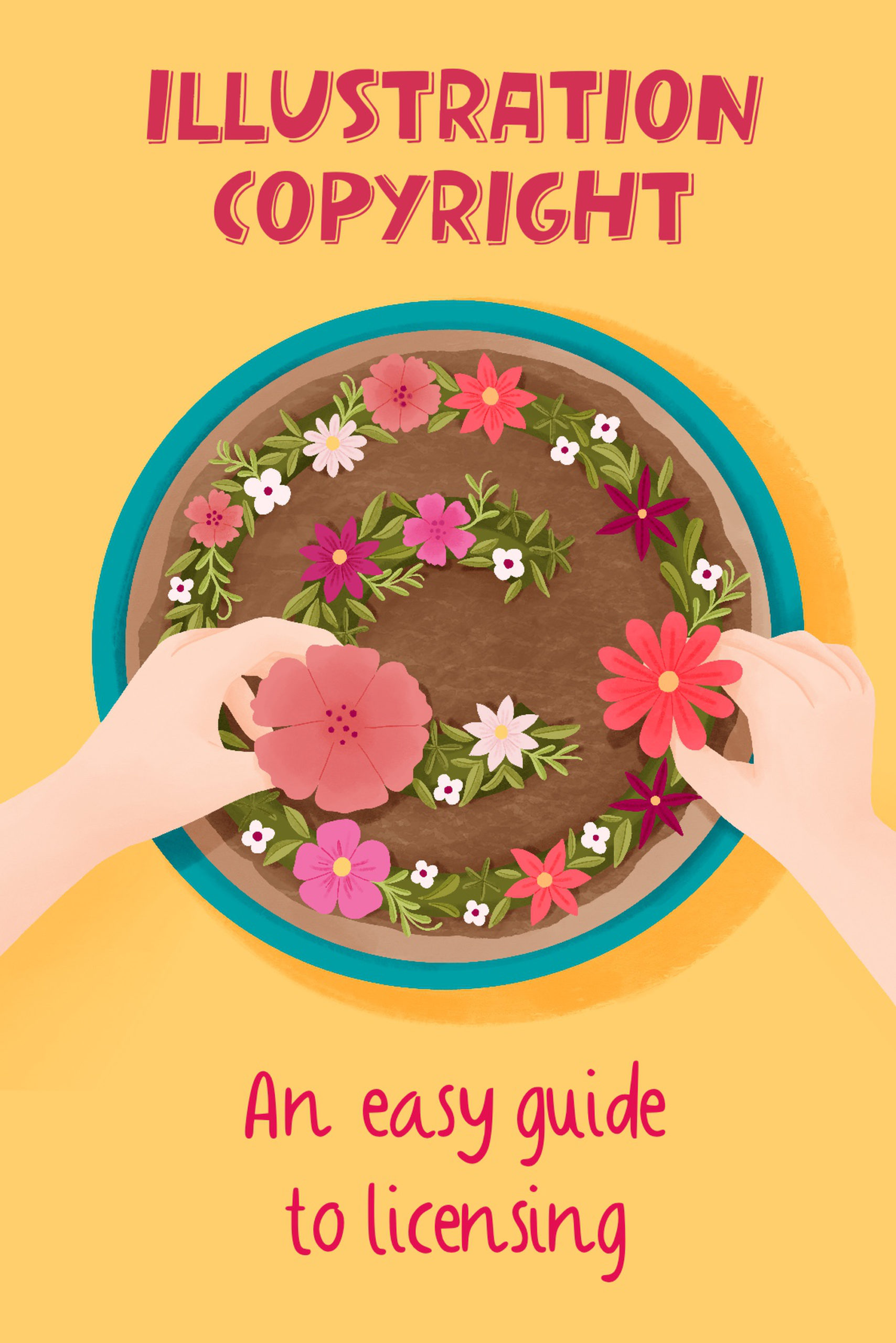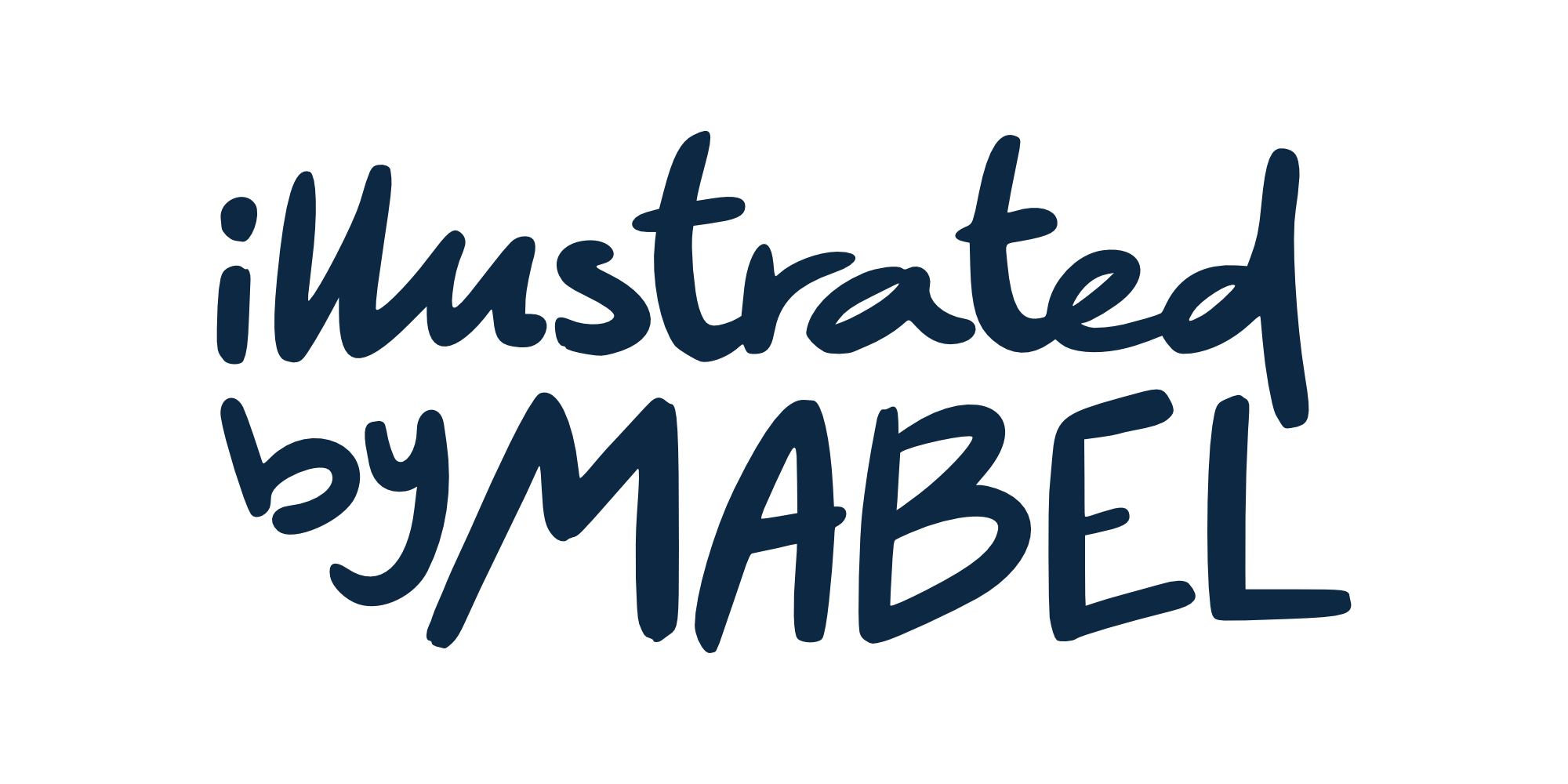
Illustration copyright – An easy guide to licensing
Let’s talk about illustration copyright!
In this blog post, I want to cover the basics of illustration copyright and what to expect when working with a freelance illustrator.
This resource wants to help those looking to commission a freelance illustrator but not entirely familiar with copyright. What it is, what it means and why it’s so important for an illustrator. However, it can also be useful to freelance illustrators who want to understand better what are their rights.
What is copyright?
Copyright, as the name suggests, is the right to copy something. It’s the right to take an original piece of work and use it for a certain purpose.
The copyright belongs to the illustrator. It’s for the illustrator to give permission to other people to use the illustration.
In the UK and Europe, copyright belongs to the creator of the work automatically. There’s no need to register the work to have it protected by copyright. There’s no need to add a © as the work is protected with or without it.
In other countries, such as the US, the work is technically copyrighted even if you don’t register it. However, you can’t legally enforce it if the work is not registered.
How long does copyright last?
Copyright lasts for the artist’s lifetime + 70 years. Once this time elapses the work moves into the public domain, where it can be used freely. At this point, the work is ‘out of copyright’. Thanks Disney!
Are copyright and trademark the same?
Copyright and trademark are not quite the same. If copyright belongs to the creator of the work from the moment pen is put to paper, a trademark is something you have to register to. A trademark is only protected once accepted onto the trademark register. It protects items or assets that identify a brand or business and its services and products, such as a logo.
What is copyright licensing?
Copyright licensing consists of the creation of a licence, a contract between commissioner and illustrator for work that will be created, or that already exists, and then used for an agreed purpose, in return for a fee.
The value of this contract is determined by 3 main factors:
Duration: How long will the illustration be used for? (2 months, 1 year, 5 years…)
Territory: Which territory will the image be used in? (UK, USA, Worldwide…)
Usage: What will the illustration be used for? (Magazines, social media, products…)
That’s why a freelance illustrator will ask you the above questions when you approach her/him asking for a quotation.
The quotation you will be provided with is not only the cost for the illustrator to produce the work but also the cost to buy the licence that allows you to use the image for a specific purpose.
The wider the usage, the duration and the territory required, the greater the cost.
The whole illustration industry works out prices in this way.
Can I ask for an exclusive licence?
Yes! Often clients may think that they need to own full rights to have sole access to the work created. This is not necessarily the case.
A copyright licensing agreement can include an exclusivity clause. This will grant the client exclusive access to the work within the other limits specified (duration, territory and usage).
Let’s say that you are looking to commission an illustrator for an editorial illustration. You don’t want that illustration used in other magazines as long as yours will be available to purchase. You can agree with the illustrator an exclusive licence. This allows you to use the illustration for your magazine exclusively for a certain length of time and in a specific territory. By doing this, the magazine retains the exclusive for the image and the illustrator retains its copyright. Once the exclusivity elapses, the illustrator can still use the image in other ways, for example, sell it in his or her online shop.
What if I realise I want to re-use work later on?
It can happen that a client realises they need to use an illustration created for them in the past for an additional purpose that wasn’t agreed upon initially in the contract. Following the above example, let’s say the magazine wants to use an illustration they previously commissioned for one of their issues, for a journal that they want to offer to their subscribers. In this case, you should get in touch with the illustrator and negotiate a re-licence. The illustrator will provide you with a quotation for a new licence. This allows you to use the image for the additional usage you require.
What about social media?
It’s quite common for people to find images online and think that it’s ok to use them.
It’s never ok, but it depends on the situation. You should certainly always ask the illustrator whether you can use an image. It will be up to the illustrator to give you permission.
However, if you are a brand and want to use an illustration for a commercial purpose you should pay the illustrator for that.
If you use the image without the illustrator’s permission, the illustrator will have all the right to ask you to remove it or to ask for compensation for the use of the work.
What is a copyright assignment?
In simple words, copyright assignment is a total transfer of the copyright from the illustrator who owns it automatically to someone else, for example to a client.
Producing an illustration for a client doesn’t entitle the client to use that illustration for whatever they want, unless you received permission to do so.
Copyright always belongs to the illustrator unless the illustrator agrees in writing and with a proper contract to transfer ownership of the copyright to their client. Only in this case, the client will be able to use the illustration in any way they wish.
However, not many professional illustrators agree to do such thing as copyright is a very valuable asset for an illustrator. So when proposing a professional illustrator this kind of deal, you should prepare to invest a large sum of money to buy full rights for the image.
Conclusions
Having a contract in place is important for both parties. It ensures that they are both happy with the T&Cs before any work can begin.
Terms in contracts are always negotiable. I always make sure that the terms in my contract are fair for both parties. I don’t want my clients to feel frustrated or restricted by them.
Some of what I’ve explained in this post may seem an exaggeration to those approaching this topic for the first time.
However, if you think about it, illustrators provide you with something that adds value to what you are offering. Illustration adds value to magazines, books, websites and several other applications. Sometimes a convincing illustration can prompt a person to make a purchase. So the illustrator should receive fair treatment and fair payment for it.
I hope you found this resource about illustration copyright helpful!
If are an illustrator and you want to dive deeper into illustration copyright I would suggest you two very important reads.
The illustrator’s guide to law and business practice – Simon Stern
Becoming a successful illustrator – Derek Brazell & Jo Davies
Disclaimers:
As you can probably guess, I’m not a lawyer. This post only wants to give you some basic understanding of illustration copyright. I would always suggest you speak to a lawyer to clarify any doubt your may have.
That’s all for now, until next time!

Pin this for later!



